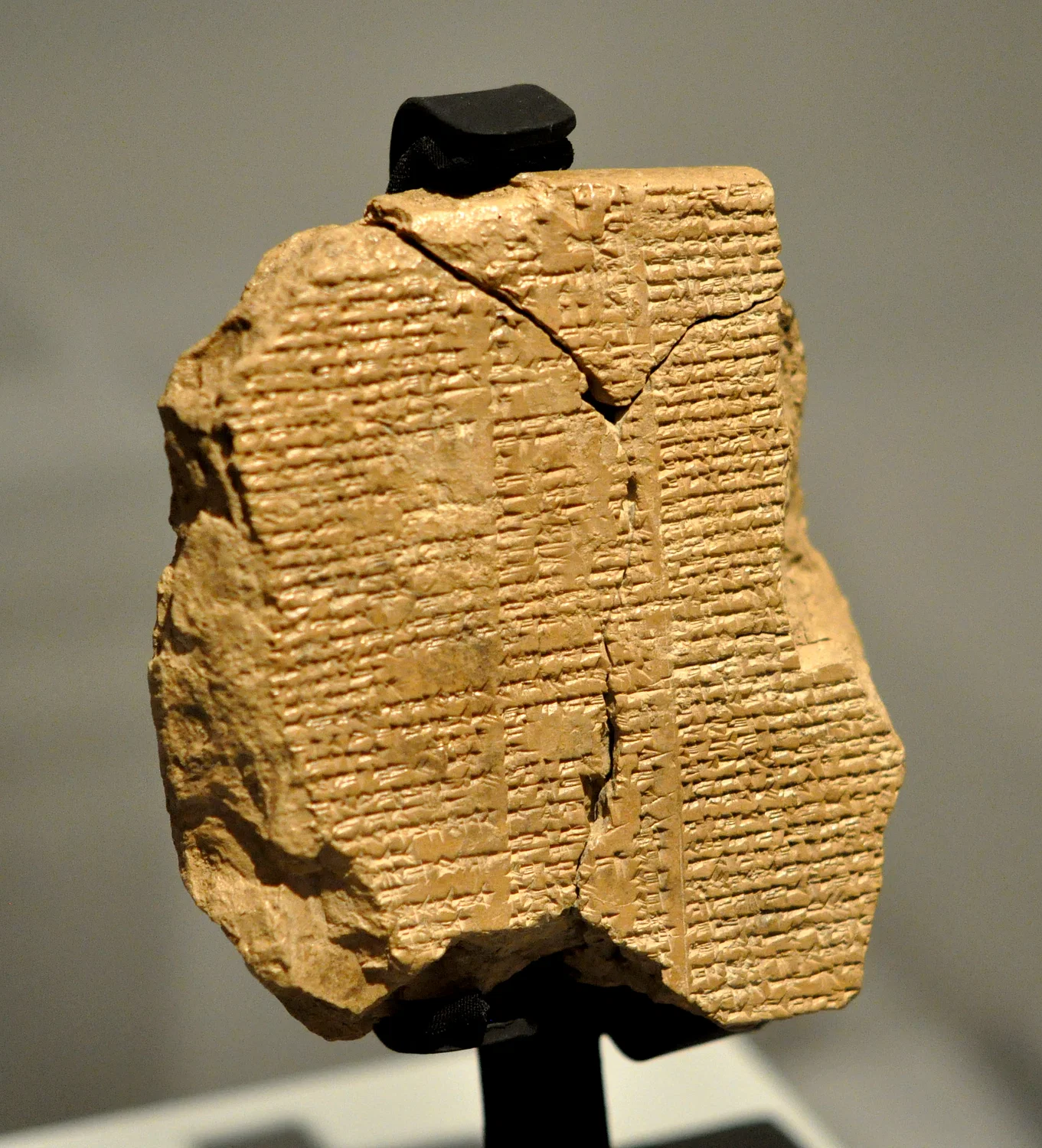The Epic Of Gilgamesh is a tale engraved in clay tablets, thought to have been composed between 2150 BCE and 1400 BCE. It tells the story of Gilgamesh, a semi-mythic king who ruled Uruk (modern-day Iraq). It is one of the oldest known pieces of literature, predating others like Homer’s Odyssey, the Iliad, and even the Bible.

Image from Osama Shukir Muhammed Amin, World History Encyclopedia. The image shows part of the ancient writings of the Epic of Gilgamesh.
In the story, Gilgamesh loses his friend Enkidu and reacts by seeking immortality. At this point, he approaches an immortal man named Utnapishtim, who had survived a great flood and had been rewarded with immortality by the gods.
Utnapishtim’s Ark
According to the tale, the gods decided to eradicate humankind, as they had been overpopulated, and they made too much noise. The god of wisdom, Ea, appears to Utnapishtim in a dream. Ea advises Utnapishtim to build an ark to protect him, his family, and some creatures from the floods. The god directs Utnapshtim to load the ark with seeds and living creatures to restore life after the floods. After the floods, the only surviving humans are Utnapishtim and his wife. At this point, Utnapishtim is rewarded with immortality and survives through the years, possessing wisdom of ages.
Noah’s Similar but Newer Story
Genesis 6:9 to 9:17 tells the story of Noah and how God instructed him to make an ark. Noah is chosen for his righteousness and, together with his family and animals of all kinds, survives a flood lasting 40 days and 40 nights. The ark lands on the 5000 M tall Mt Ararat in Turkey. In this case, God is reacting to the wickedness of humanity. In the end, God makes a covenant with Noah, promising never to use floods to eradicate humanity again. According to the tale, that is how the rainbow came to be, symbolizing this covenant.
Comparison between Utnapishtim’s and Noah’s flood stories

Both have Obvious Shortcomings
They bible story does not account for plants. For instance, beans and potatoes would be destroyed if they remained in floods for 40 days and nights. The Epic of Gilgamesh at least mentions seeds, but again, not all plants produce seeds, so it still fails in practicality. Immediately after the flood, vegetation needed to be there for the herbivores to eat. Carnivores would have had to wait for the herbivores to multiply before eating them. Eating one of the zebras would have wiped out the species, right? If there were just two gazelles, the lions would need to wait for them to multiply, or the whole species could have been eradicated with a single meal.
It is also important to consider that some animals and plants are only found in some places and not others. For instance, there would not be a kangaroo in Iraq, not to mention the many species of plants and animals only found in the Amazon and nowhere else. For these species to get to the ark, they needed to cross oceans.
The two stories do not account for microorganisms, some of which would be destroyed if they remained in water for that long. Mycoplasmas are an example of bacteria that would not survive in hypotonic environments. The Bible never mentions microorganisms despite them having existed from time immemorial. The explanation could be that people did not discover microorganisms until 1665, many years after the Bible had been written. If indeed the Bible contains the wordings of an all-knowing god, it could have mentioned the microorganisms.
Other obvious shortcomings of the narratives include the sizes of the arks constructed. For instance, Noah’s ark measured 134m by 22m by 13 m (440×72×43 ft). The arks were practically too small to house all the creatures, as claimed.
Again, if a flood were to cover the whole world, the waters would need to evaporate to create space and not just drain into the oceans as the oceans would be full. Water from 40 days and nights of rain would be too much to evaporate or infiltrate to leave the ground dry. Even as we talk of the rainbow, people now know what forms them. They occur when raindrops scatter sunlight into the observer’s eyes. Noah’s narrative tried to explain where the rainbow came from, as people had limited knowledge about such phenomena then.
Myths Founded on Popularity?
It is unlikely that two floods of the magnitudes described in the narratives occurred. Noah’s story, being younger than Utnapishtim’s, is of even lesser authority. Like Utnapishtim’s flood, Noah’s flood is a myth that gains authority among people based on its popularity rather than correctness. Just because many people believe in something, it does not mean they are right.
What are your thoughts, leave a comment below and check our other articles here.

Leave a Reply